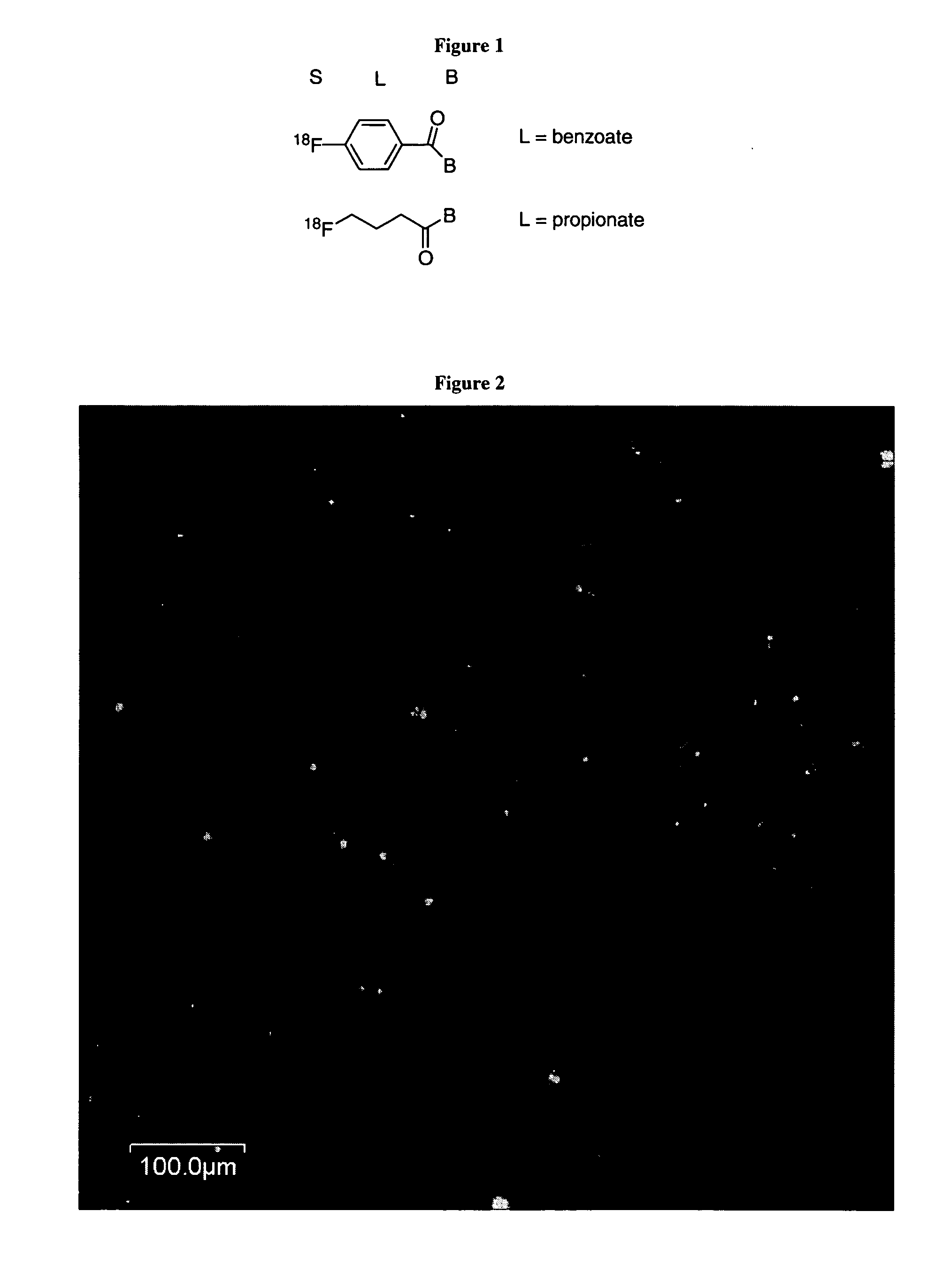Labeled ligands for lectin-like oxidized low-density lipoprotein receptor (LOX-1)
a low-density lipoprotein receptor and labeling technology, applied in the field of compound labeling with imaging agents, can solve the problems of angina or ischemic sudden death, many unanswered questions, and many unanswered questions
- Summary
- Abstract
- Description
- Claims
- Application Information
AI Technical Summary
Benefits of technology
Problems solved by technology
Method used
Image
Examples
example 1
[0115] A peptide was conjugated with fluorescein (Fl-KKGG-FQTPPQL) and was shown to bind to human endothelial coronary artery cells (HCAECs) which are known in the literature to express LOX-1. An image of HCAECs grown in glass slides treated with this peptide obtained using a fluorescent confocal microsope is shown in FIG. 2; the fluorescent image (shows fluorescently tagged peptide as bright green) is overlaid with the transmitted light image (shows outline of cells). The example reveals that the peptide above was localized on the cells. The experimental conditions for imaging the peptide-labeled HCAECs are described previously.
example 2
[0116] A solution of polyclonal antibody (IgG) was produced by Invitrogen Corporation, (Carlsbad, Calif.) against the sequence Arg-Gly-Ala-Val-Tyr-Ala-Glu-Asn-Cys-Ile at a concentration of 1.5 mg / mL. Three aliquots containing 250 μg (166 μL) each were transferred to 1.5 mL Eppendorf tubes and maintained at 0° C. The solutions were treated with NaHCO3 (1M, 20 μL) and gently inverted. In a separate tube, a solution of 5-carboxyfluorescein-N-hydroxysuccinate ester in DMF (1 mg / mL) was prepared. The antibody solutions were treated with 5, 20 or 50 equivalents of the fluorescein / DMF solutions (3.95, 15.8 and 39 μL respectively). The highest concentration of DMF was 17%. The tubes were allowed to warm to room temperature over 1 hour and gently inverted every 15 minutes to assure mixing. During this time PD-10 columns were equilibrated with PBS and eluted until the sorbent bed was exposed.
[0117] The entire reaction mixtures were transferred to the columns and eluted with PBS.
[0118] The f...
PUM
| Property | Measurement | Unit |
|---|---|---|
| Length | aaaaa | aaaaa |
| Length | aaaaa | aaaaa |
| Electric charge | aaaaa | aaaaa |
Abstract
Description
Claims
Application Information
 Login to View More
Login to View More - R&D
- Intellectual Property
- Life Sciences
- Materials
- Tech Scout
- Unparalleled Data Quality
- Higher Quality Content
- 60% Fewer Hallucinations
Browse by: Latest US Patents, China's latest patents, Technical Efficacy Thesaurus, Application Domain, Technology Topic, Popular Technical Reports.
© 2025 PatSnap. All rights reserved.Legal|Privacy policy|Modern Slavery Act Transparency Statement|Sitemap|About US| Contact US: help@patsnap.com



